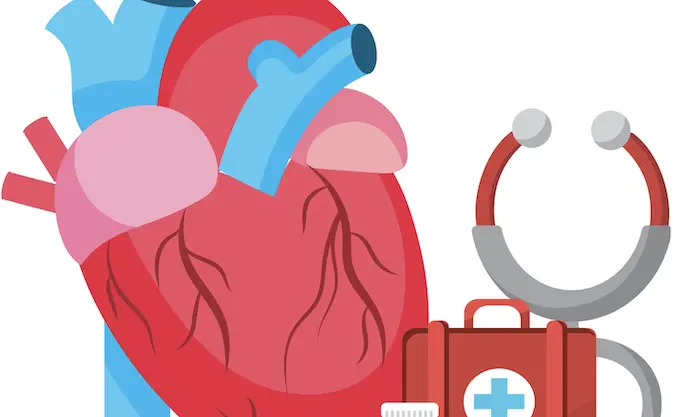Myocardial infarction (MI) and acute coronary syndrome (ACS) are terms often used interchangeably, yet they represent distinct concepts in cardiovascular medicine. Understanding their relationship is crucial for accurate diagnosis, treatment, and patient care. This article provides an in-depth look at how myocardial infarction fits within the broader framework of acute coronary syndrome, clarifying definitions, classifications, causes, and clinical implications. As a cardiovascular specialist, it is essential to distinguish these terms with precision and clarity.
What Is Acute Coronary Syndrome?
Acute coronary syndrome is a term used to describe a spectrum of clinical conditions associated with acute, sudden reduction of blood flow to the heart muscle. It encompasses three primary diagnoses:
- Unstable angina (UA)
- Non-ST-elevation myocardial infarction (NSTEMI)
- ST-elevation myocardial infarction (STEMI)
These conditions are typically caused by the rupture or erosion of an atherosclerotic plaque in a coronary artery, leading to the formation of a thrombus (blood clot). The degree of arterial blockage and the presence or absence of myocardial cell death determine the specific diagnosis within the ACS spectrum.
What Is Myocardial Infarction?
Myocardial infarction, commonly referred to as a heart attack, occurs when blood flow to a part of the heart muscle is blocked for an extended period, causing irreversible damage or death to heart tissue. It is identified by specific clinical features, including:
- Prolonged chest pain or discomfort
- Electrocardiogram (ECG) changes indicating infarction
- Elevated cardiac biomarkers, such as troponins
MI is part of the ACS continuum but represents the point at which heart muscle injury has occurred due to insufficient blood supply.
Key Differences Between MI and ACS
Terminology Scope
ACS is a broader term that includes myocardial infarction as well as unstable angina. In contrast, MI refers specifically to the death of heart muscle tissue caused by prolonged ischemia. Thus, while all MIs are a form of ACS, not all ACS cases result in MI.
Presence of Myocardial Necrosis
In MI, necrosis (tissue death) is confirmed through elevated troponin levels. In unstable angina, despite similar symptoms and ECG findings, troponin levels remain normal, indicating no myocardial death. This distinction is critical for diagnosis and management.
ECG Changes
Both MI and other forms of ACS may show changes on ECG, but ST-segment elevation on an ECG typically indicates a STEMI, while non-ST-elevation changes (such as ST depression or T wave inversion) suggest NSTEMI or unstable angina.
Classification of Myocardial Infarction
The Universal Definition of Myocardial Infarction categorizes MI into five types based on their underlying mechanisms:
- Type 1 MI: Spontaneous MI due to plaque rupture and thrombus formation
- Type 2 MI: MI secondary to ischemia from increased oxygen demand or decreased supply
- Type 3 MI: Sudden cardiac death with evidence of ischemia
- Type 4 MI: MI related to percutaneous coronary intervention (PCI)
- Type 5 MI: MI associated with coronary artery bypass grafting (CABG)
These classifications help differentiate MIs based on causative factors, providing guidance for treatment and prognosis.
Pathophysiology of Acute Coronary Syndrome
The development of ACS begins with the formation of an atherosclerotic plaque in the coronary artery wall. This plaque may rupture, exposing thrombogenic substances that initiate clot formation. The resulting thrombus can partially or completely block the coronary artery, leading to ischemia.
Other contributing factors include:
- Endothelial dysfunction
- Inflammatory responses
- Coronary artery spasm
- Platelet aggregation
Depending on the degree and duration of the blockage, the outcome may range from unstable angina to full-blown myocardial infarction.
Symptoms of Myocardial Infarction and ACS
The symptoms of MI and other ACS conditions often overlap, making clinical evaluation essential. Common symptoms include:
- Chest pain or pressure, often radiating to the arm, neck, or jaw
- Shortness of breath
- Nausea or vomiting
- Diaphoresis (sweating)
- Lightheadedness or syncope
Patients with diabetes or older adults may present with atypical symptoms, such as fatigue, confusion, or mild indigestion-like discomfort.
Diagnostic Tools for Differentiation
Electrocardiogram (ECG)
The ECG is the initial and most important tool for evaluating chest pain. ST-segment elevation points to STEMI. ST depression or T wave inversion may indicate NSTEMI or unstable angina.
Cardiac Biomarkers
Troponin levels rise within hours of myocardial injury and remain elevated for days. Elevated troponins confirm the diagnosis of myocardial infarction. In unstable angina, troponins remain normal.
Coronary Angiography
This imaging test allows visualization of coronary artery blockages and is often used during or after a suspected ACS event, especially when PCI is being considered.
Treatment of Myocardial Infarction and ACS
Early and aggressive treatment of ACS is essential to restore coronary blood flow and minimize heart damage. Treatment depends on the specific diagnosis:
For STEMI
- Immediate reperfusion therapy with primary PCI or fibrinolytics
- Dual antiplatelet therapy (aspirin and P2Y12 inhibitors)
- Anticoagulants
- Beta-blockers and statins
For NSTEMI and Unstable Angina
- Risk stratification and coronary angiography
- Antiplatelet and anticoagulant therapy
- Beta-blockers, nitrates, and statins
- Possible PCI based on angiography results
Prognosis and Long-Term Management
The prognosis of patients with MI or ACS depends on the extent of myocardial damage, the timeliness of intervention, and comorbid conditions. Long-term management strategies include:
- Smoking cessation
- Blood pressure and lipid control
- Diabetes management
- Regular exercise and heart-healthy diet
- Adherence to prescribed medications
Cardiac rehabilitation programs can significantly improve outcomes and quality of life in post-MI patients.
Conclusion
Myocardial infarction is not the same as acute coronary syndrome. Rather, it is a subset within the ACS spectrum. ACS includes unstable angina, NSTEMI, and STEMI, with MI defined by irreversible myocardial injury. Understanding the nuances of these terms is essential for accurate diagnosis, timely treatment, and effective prevention of complications. By recognizing the distinctions and overlaps between MI and ACS, healthcare providers can better manage patients and improve cardiovascular outcomes.
Related topics:


